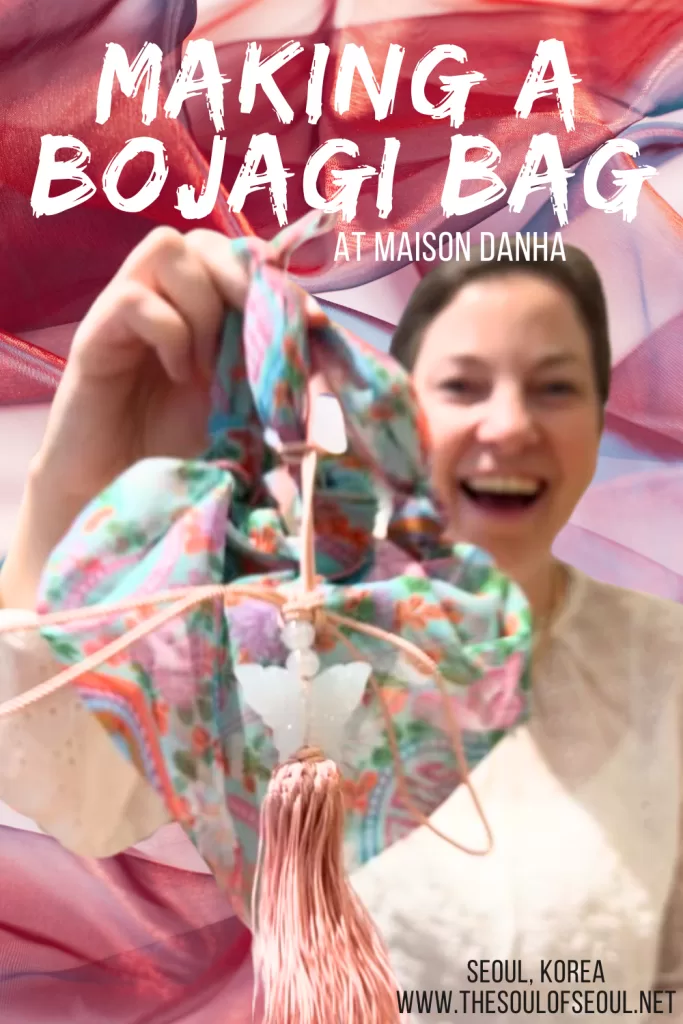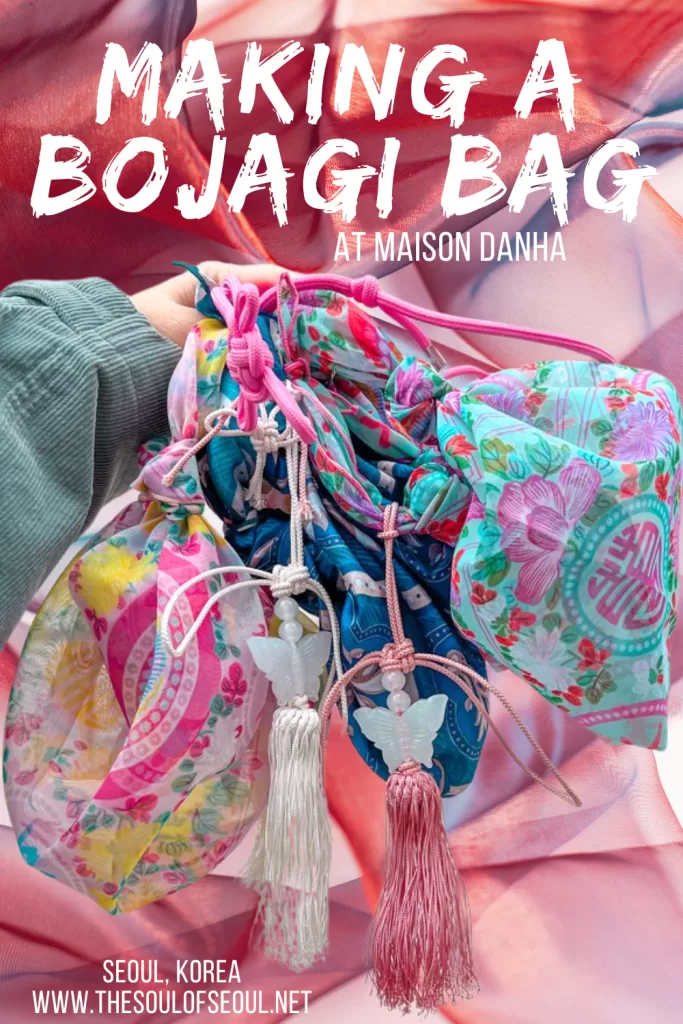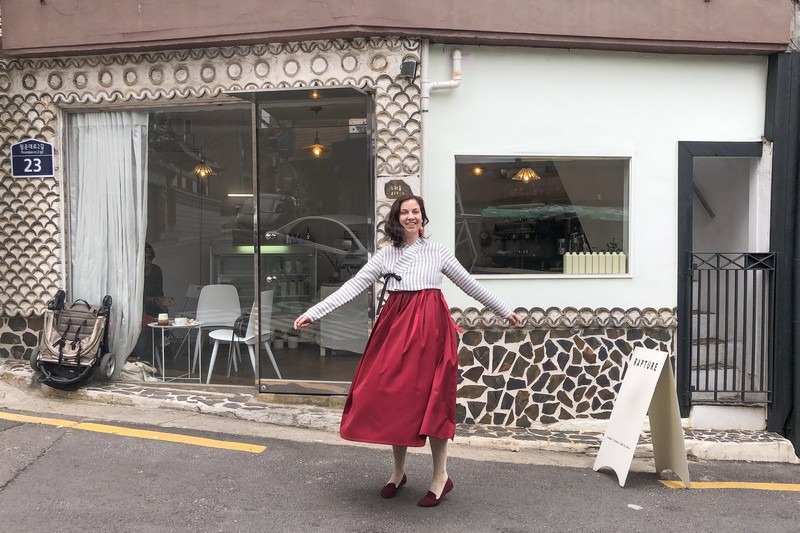Craft, Culture, and Color: Discover Maison Danha’s Bojagi Experience in Seoul
Last Updated on February 6, 2025
Danha (단하한복) is a name you may not know, though you should, with a modern Hanbok style you’re sure to remember. They splashed onto the Hanbok scene in 2018 and made waves when they were featured in BLACKPINK’s music video “How You Like That” in 2020. Their bold prints and bright colors that pay homage to traditional Korean patterns are stunning and on top of that, they’re focused on sustainability.
Their Hanboks are gorgeous and I plan to get one, but until I do, I signed up for their bojagi bag-making workshop just to visit their space and learn more. With my daughter along for the adventure, we headed to the beautiful Maison Danha near Gyeongbokgung Palace and created our bags, a perfect and unique souvenir from Korea if anyone is on the hunt.
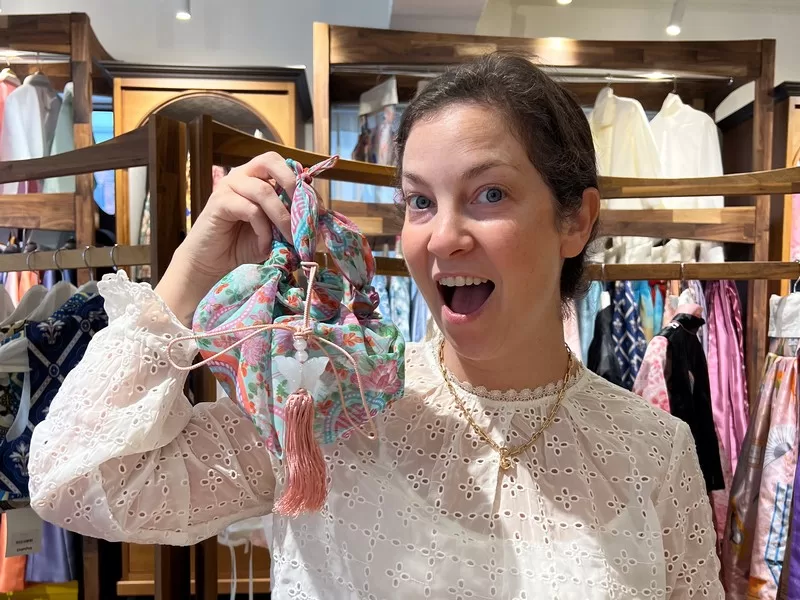
Visit Maison Danha for this unique experience in downtown Seoul, Korea:
- Basic Info
- What to know about Danha Hanbok
- What is Maison Danha
- Make a bojagi bag at Maison Danha
- Pro Tips for Visitors
(This post contains affiliate links, which means I receive a certain percentage of a sale if you purchase after clicking at no cost to you. Thank you for your support.)
Basic Info
Address: 39-7 Palpan-gil, Jongno-gu, Seoul (서울시 종로구 팔판길 39-7)
Hours: Saturdays and Sundays: 10:00am ~ 6:00pm*
*The shop itself is open throughout the week, but this specific activity is only available on the weekends.
Age restrictions: Available for for those 10 years old and above.
How To Book: You can find the bojagi bag experience on Creatrip.
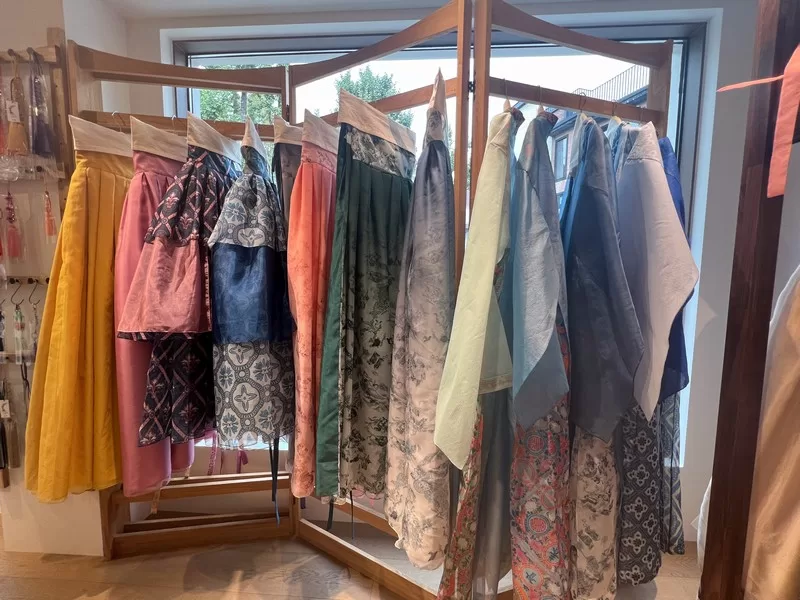
What to know about Danha Hanbok
Danha is a sustainable fashion brand based on Korean tradition. Launched in 2018 by Danha Kim, Danha makes beautiful Hanboks inspired by traditional patterns, fabrics, and styles. Their stunning Hanboks are eco-friendly, crafted from organic cotton and recycled polyester, blending traditional Korean patterns with contemporary flair.
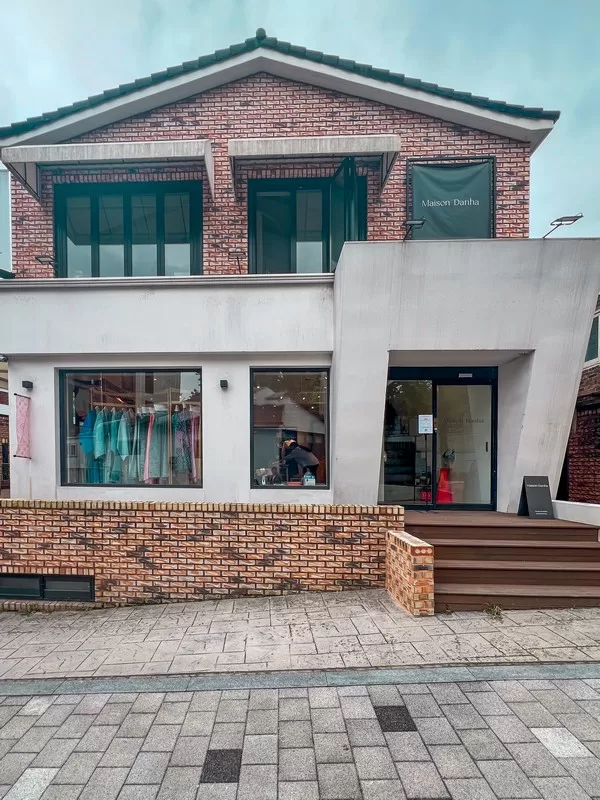
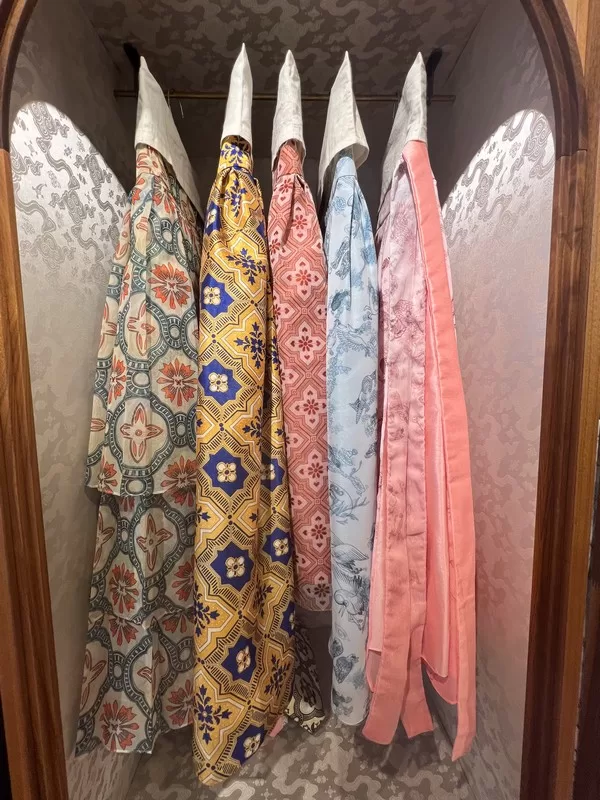
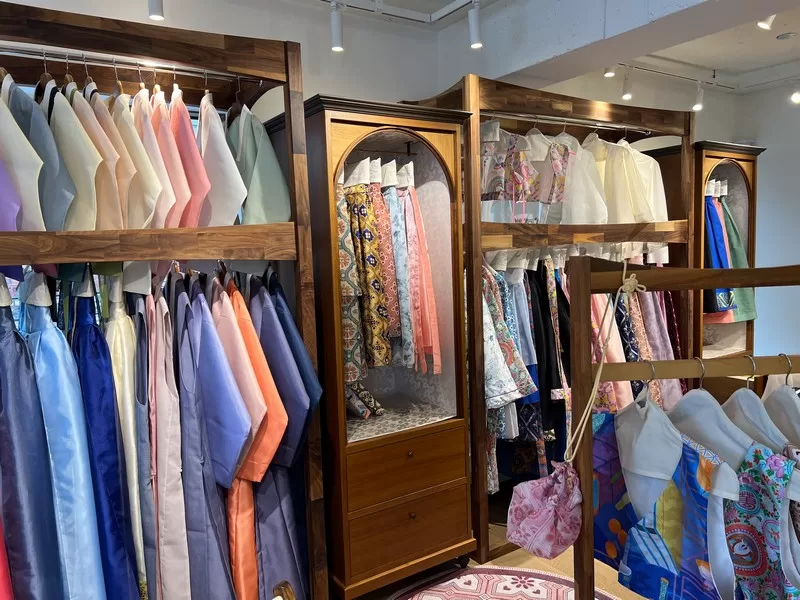
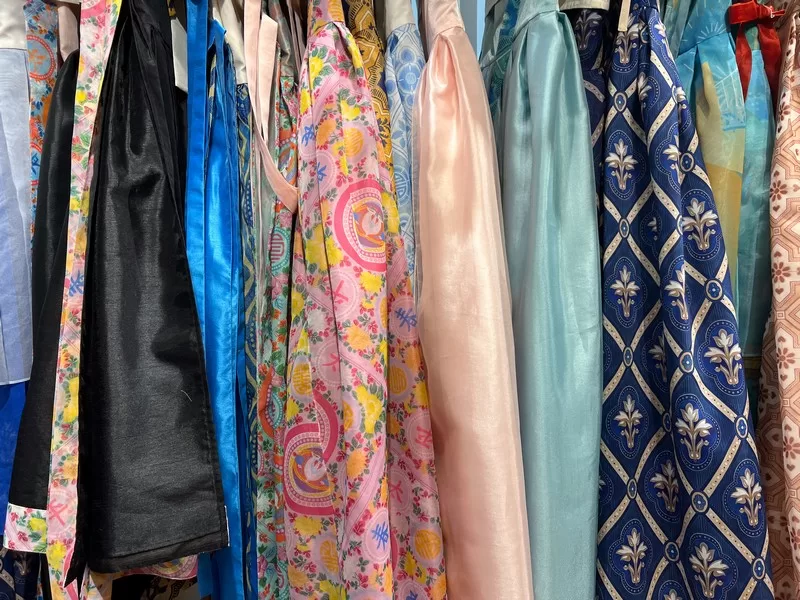
What is Maison Danha
Maison Danha is the beautiful boutique shop where customers can get a custom-made Hanbok. Work with the designer that assists you from body measurement, to delivery to get your one-of-a-kind Hanbok.
If you aren’t quite ready to make the purchase, you can still visit Maison Danha for a wonderful bojagi experience and get a peak at the beautiful Hanboks designed by Danha. Better yet, if you’re considering purchasing a Danha Hanbok but want to wear it around first, you can rent a Danha Hanbok and take it for a whirl around downtown.
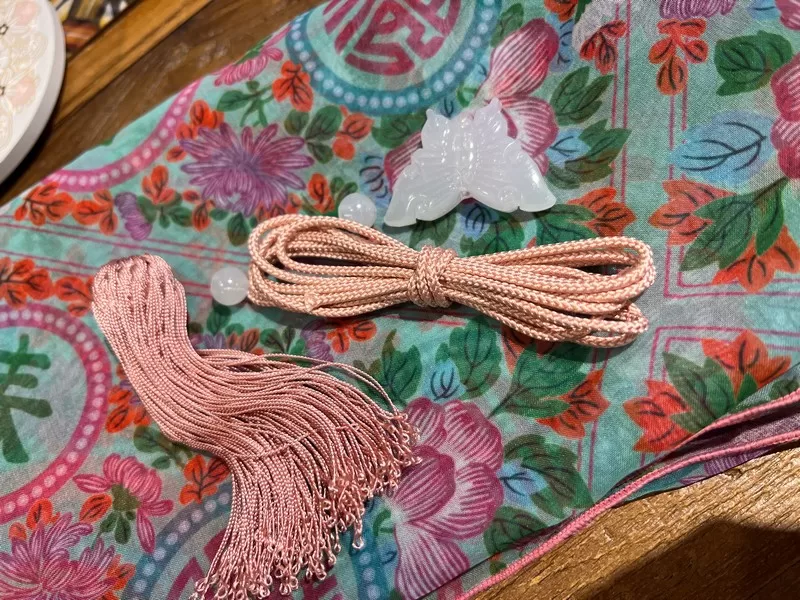
Make a bojagi bag at Maison Danha
The 60-minute workshop at Maison Danha is an intimate, hands-on session perfect for anyone 10 years and older. Here’s what to expect:
- Welcome with Tea & Snacks: Settle into a cozy space with warm hospitality.
- Choose Your Bojagi Fabric: Pick from vibrant Maison Danha designs inspired by traditional Korean art.
- Learn Traditional Korean Knots: The staff will guide you through the process of tying knots to transform your fabric into a beautiful, functional bag.
- Add a Personal Touch with Norigae: You’ll also create a simple norigae (노리게), a traditional Korean accessory made with cords, tassels, and a pendant to adorn your bag.
Don’t worry if you’re unfamiliar with Korean crafts—the friendly staff provides step-by-step guidance. Making the norigae can be a bit tricky, but that’s part of the fun, and the staff are always there to help.
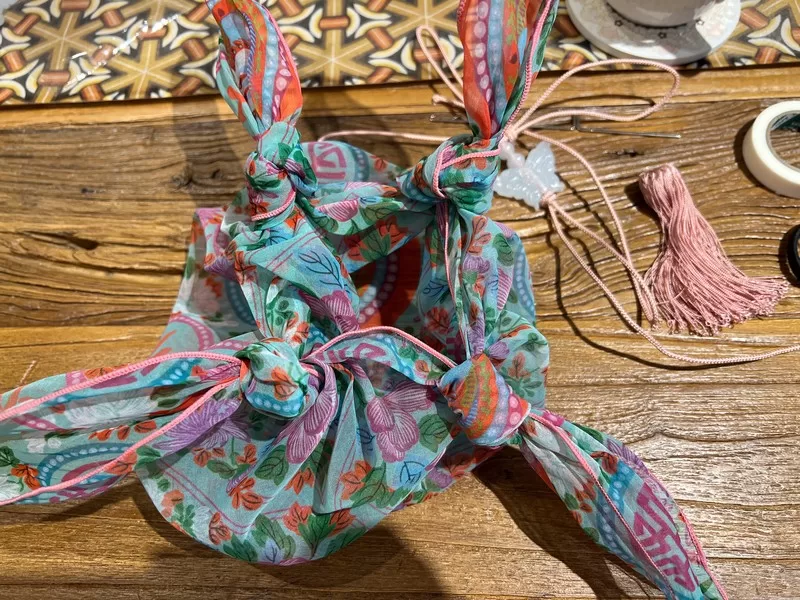
What is bojagi?
Bojagi (보자기) is a traditional Korean wrapping cloth used for everything from gift wrapping to home decor. Dating back to the Joseon Dynasty (1392–1910), bojagi symbolizes good fortune and sustainability. Made from materials like silk, cotton, and ramie, it’s often beautifully embroidered or pieced together in patchwork styles called jogakbo. You can see a beautiful collection of bojagi at the nearby Seoul Museum of Craft Art.
If you visit upscale boutique shops like Sulwhasoo’s Flagship Store in Bukchon or Geumokdang, a Korean yanggaeng (traditional jelly maker), after you make a purchase, they will wrap your items in bojagi! Not only does it make your gift even more beautiful, but, you’ll have an extra keepsake from Korea, as the cloth can always be repurposed and reused.
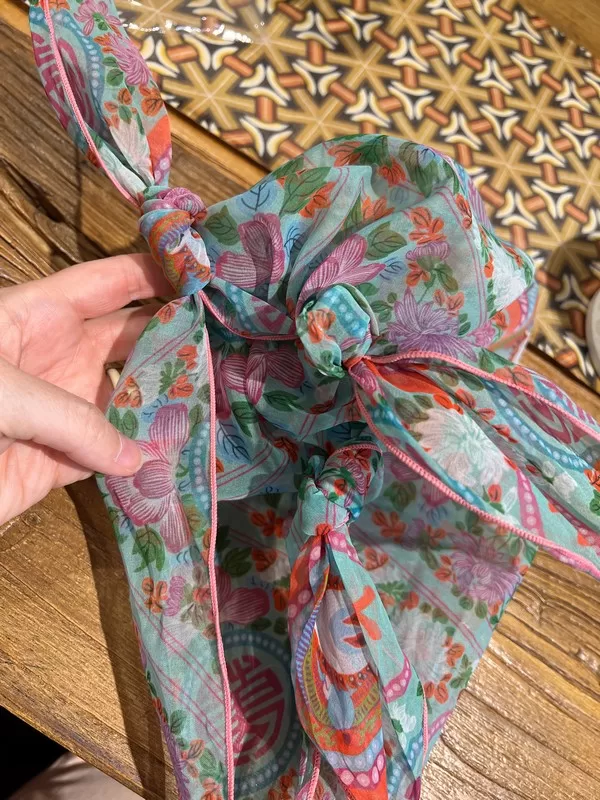
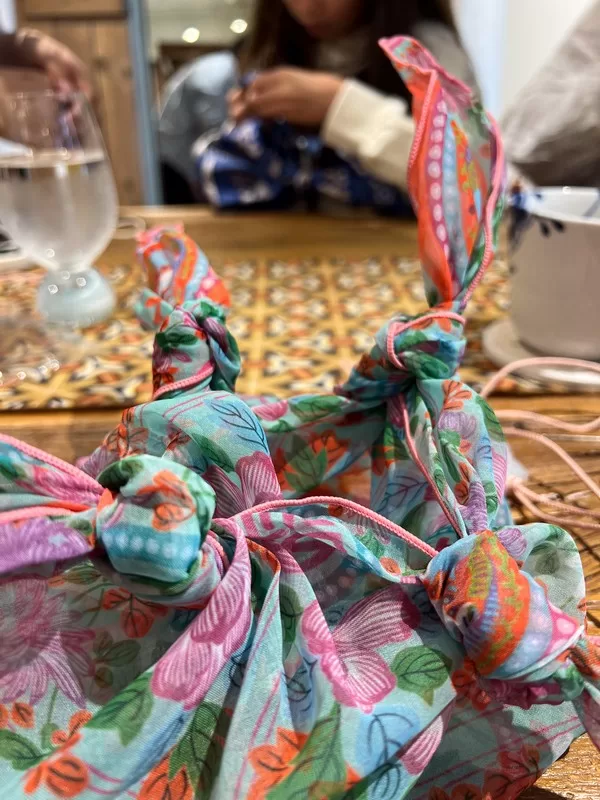
How to make bojagi
The process of making bojagi is simply tying knots to create not only a bag or wrapping, but a decorative one at that. After you choose your piece of cloth in a representative Danha print, staff will guide you through the process of tying knots where they should be tied. This is the easier part of the experience. Just tie knots using the ends of the handkerchief to create loops, making sure the knots are closer to the corners than the center so there’s plenty of space to hold the creation.
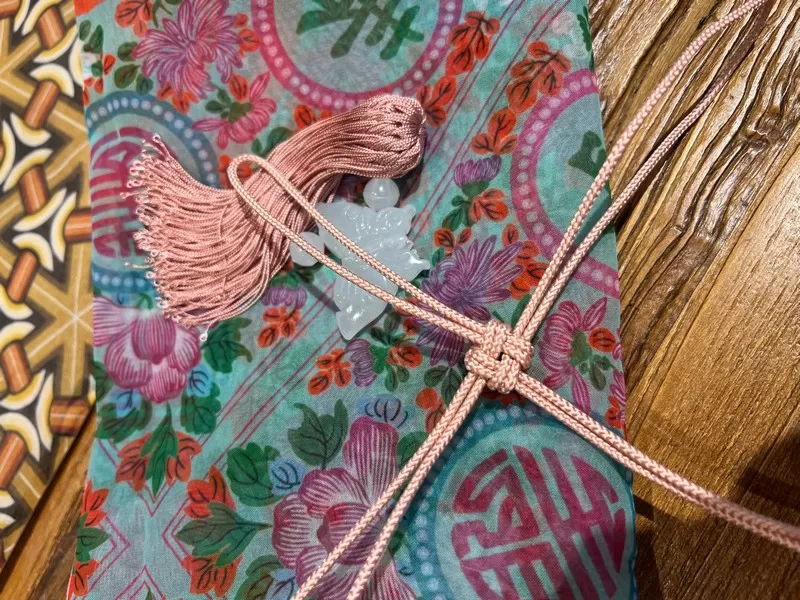
What is a norigae?
A norigae (노리개) is a decorative Korean accessory traditionally worn with Hanboks, often symbolizing good fortune. Crafted with tassels and intricate knots, they were popular during the Joseon Dynasty and made from materials like jade, gold, and silver. Today, you’ll find antique norigae in Insadong’s traditional shops, they make for unique souvenirs that carry a piece of Korean history.
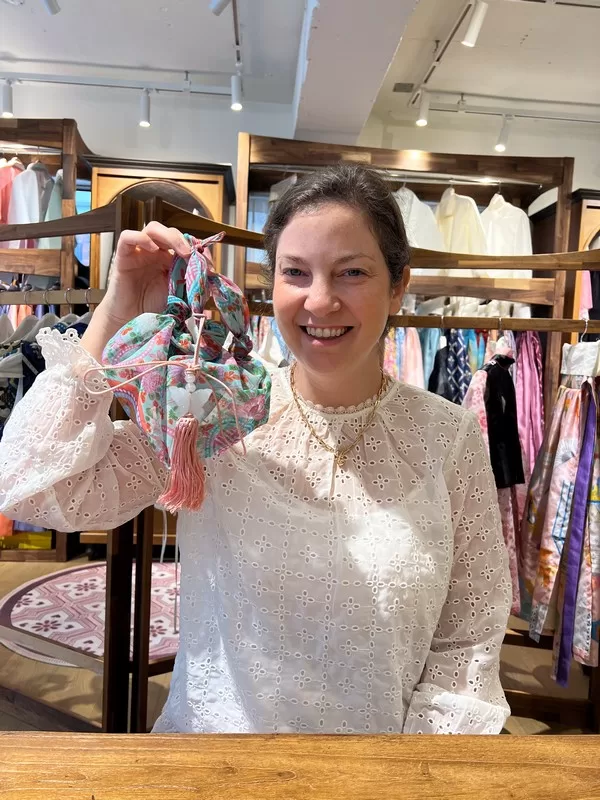
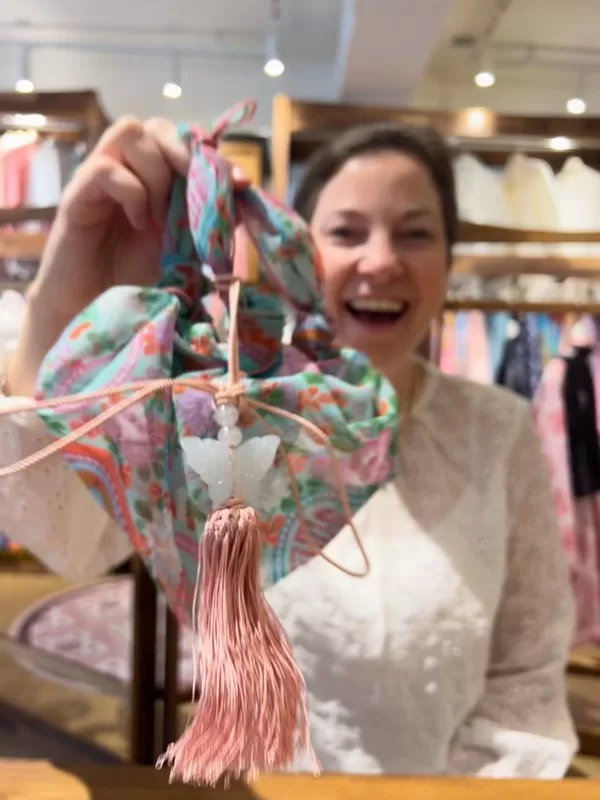
Making the norigae is the most difficult part of the experience but the staff are very adept and helpful with the process if you get stuck. While ours are a simple knot, if you see other norigae, you’ll notice that there can be a number of difficult knots used to make a norigae decoration. For our crew, these simpler forms were enough.
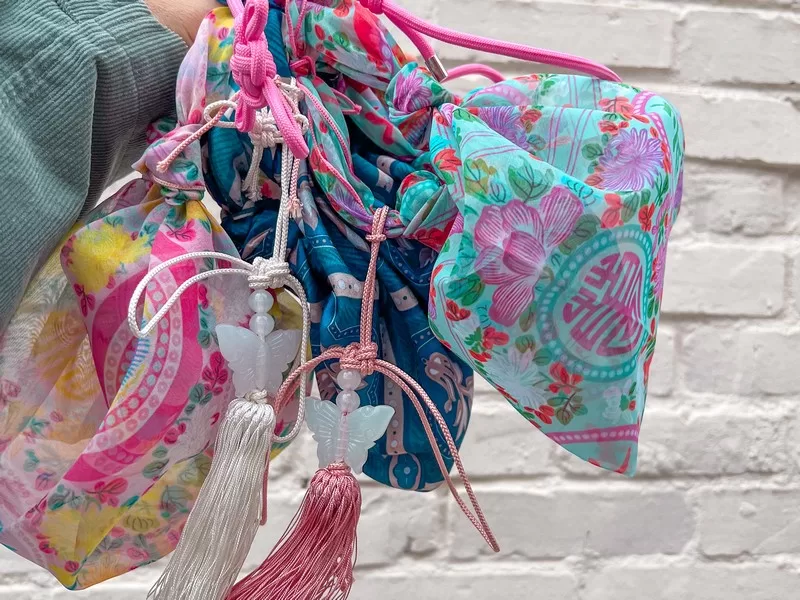
Pro Tips for Visitors
- Be on time: There are limited seats and they try to begin promptly. With only four people in a class, it’s best to respect the time.
- Feel free to look around: After creating your bojagi bag, take a moment to browse Maison Danha’s stunning Hanbok collection.
- Language Barrier? Basic English is spoken, and instructions are easy to follow.
Did you like this post? Pin IT!
